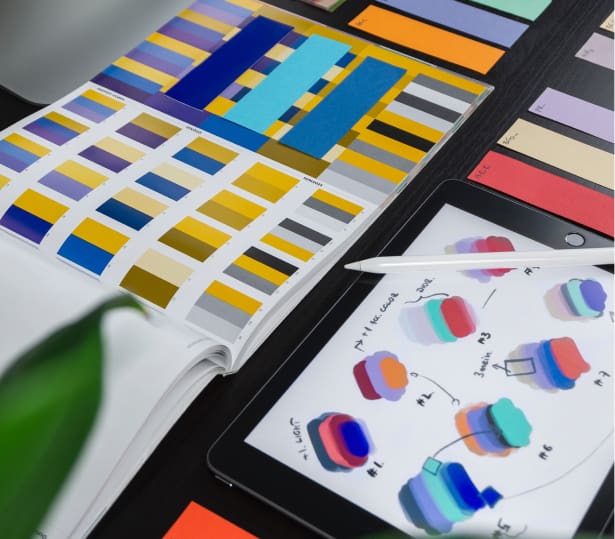Personalized Content Can Save Your Marketing

It’s no secret that customers these days are overwhelmed with marketing messages. Every day, customers will be exposed to tens of thousands of logos, ads, emails, and other modes of communication.
In all that noise, it’s difficult to make yourself seen or heard — and once you’re seen or heard, it’s hard to make an impression that sticks. You probably saw half a dozen billboards on your way to work today, but do you remember any of them? Didn’t think so.
If one of those billboards had your name on it, though, you’d have taken notice. That’s the idea behind personalized marketing — messaging and channels that speak to individuals or small groups in a way that feels focused, specific, and relevant. Here’s how to do it.
Why Personalization Matters
Personalization in the products you use is becoming so ubiquitous that you might not even notice it anymore. Netflix makes suggestions based on what you’ve already watched, Amazon suggests products based on what you’ve purchased in the past and what you’ve browsed recently, and even your local grocery store prints specific coupons at checkout when you enter your phone number.
There is a trade-off when it comes to personalization: privacy. We’ve all heard stories about people having a conversation about how much they’d like to visit wine country in California, only to see ads for cheap tickets to Sonoma on their Facebook page the next day. While it’s not clear whether this constant listening is confirmed or just anecdotal, it’s making people uncomfortable nonetheless.
The point is that there’s a spectrum of personalization. On one end is no personalization at all — male customers getting emails about women’s clothing, B2B customers seeing ads for software they’ve already bought, and utterly unhelpful suggestions on retail sites.
On the other is the kind of personalization that has you looking over your shoulder, wondering who’s listening to your conversations and whether they should even be allowed to.
Customers don’t like being served content that’s completely unrelated to them or their interests. It’s irrelevant at best, intrusive at worst, and certainly doesn’t make them feel noticed or cared about by the companies they work with. Your personalization needs to be somewhere in the middle — helpful, but not creepy.
What Are Personalization Tokens?
One of the most common — and easy to use — personalization tools is the use of tokens. You’ve doubtless encountered these before, any time you opened an email from a company with your name in the subject line.
Tokens allow you to customize your emails, landing pages, and website pages with any contact property or custom property. It can be as simple as a personalized greeting, addressing someone by their name or advertising your services directly to the name of their business. Or your token can be more complex, referring back to previous purchases they’ve made, their account renewal date, or the last whitepaper they downloaded.
If you’re using a CRM (customer resource manager) like HubSpot, you’ll probably have that functionality built in. Most email and ad software tools also have the ability to use tokens. Formatting your emails and landing pages with tokens is an easy way to add a one-on-one feel to your content, and you probably already have the means to do it!
How Artificial Intelligence Can Help
The hard part about personalization is the sheer number of people you have to personalize for. If you’re a B2C company, you could have tens of thousands of customers, and you don’t want to pigeonhole any of them or make them feel less special.
And in the B2B world, account-based marketing (ABM) is starting to come to the forefront — a strategy of marketing wherein a marketing team creates content, events, and entire campaigns that are dedicated to one single account, rather than a broader category or market.
The good news is that automation and artificial intelligence have never been smarter. AI tools can find patterns and draw correlations that would be prohibitively time-consuming or expensive for a human marketing team to sift through, generating personalized content suggestions and sending pertinent emails designed to be as helpful and timely as possible.
How To Personalize Your Content Marketing
Personalization can take a lot of forms — your strategy will depend on your business, your industry, your resources, and your customers — but here are a few broad-strokes tips to help you get started.
Use People’s Real Names
Ever gotten a piece of mail addressed to “Current Resident”? Did it make you feel warm and fuzzy inside, like that company genuinely wanted to help you out? We didn’t think so. Using a customer’s real name in email communications and on landing pages is a simple touch, but one that will help give your company a personable face.
Segment Your Email Database
If you’re sending marketing emails, you need to be using segmentation. At its most basic level, segmenting allows you to send different emails to different people — customers with different job titles or locations, for example. But when you really dive into it, segmenting can be much more powerful than that.
With the right tools, you can segment by people that have yet to use certain features of your product, or people that haven’t read the educational materials, and email them to see if they need more help. You can segment by people who have paid monthly for more than eight months and send them an email about how much they could save with a yearly subscription. You can find the people that are heavily utilizing the basic service tier of your product and offer them a discount on an upgrade. The possibilities are endless!
Set Up Targeted Landing Pages
A landing page is usually pretty simple — a few paragraphs of text, a basic form, and then a CTA to download a whitepaper or sign up for a newsletter. Since it’s so easy to duplicate that page and create copies with slightly different copy or graphics, you can set up landing pages dedicated to certain segments of your customer base, much like email.
Swap out the photo in the background based on the user’s location or time of year. Change up the copy depending on whether they clicked through from email or social media. Change the offer on the page for repeat customers versus first timers. Again, the exact strategy will be different depending on your business, but you have room to experiment! Try out a few options, run the analytics, and see what’s working.
Interact on Social Media
Customers these days are more and more likely to do at least part of their buying research on social media, even for B2B applications. Automated processes like bots and targeted ads can help you reach out to more people in more places, but you’re also going to have to get into the weeds and interact with people one on one. If people visit your product’s page with more complicated questions, it pays to have a real person ready to answer them.
The Bottom Line
The more you personalize your marketing, the more time you’ll have to spend on each piece of your strategy — and that means reaching fewer total people than if you were simply pushing the same message to everyone you can reach.
But the point of personalized messaging isn’t to reach the maximum number of people — it’s to reach exactly the right people in exactly the right way to forge a personal connection that cuts through the clutter of marketing that customers are inundated with on a daily basis. If you can add a personal touch to your messaging, you’ll stand out from the crowd and build loyalty that mere exposure will never achieve.





